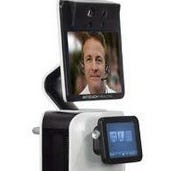Hospitals In Early Stage of Analytics UsageHospitals In Early Stage of Analytics Usage
Fewer than half of healthcare organizations have clinical and business intelligence tools, and most who do are still learning how to use them, says HIMSS Analytics survey.


Remote Patient Monitoring: 9 Promising Technologies (click image for larger view)
Despite all the hoopla about clinical and business intelligence (C&BI) applications, the use of these tools by hospitals and healthcare systems is still in an early phase, a new report indicates. Only 46% of the 529 respondents to a HIMSS Analytics survey said they were using C&BI, and the majority of those indicated they were still learning how to use these analytic tools.
Also revealing was the fact that more than half of C&BI users said they were using the analytic modules imbedded in their electronic health record/hospital information system (EHR/HIS). In contrast, less than a quarter of the C&BI users had purchased "best of breed" solutions, which tend to be more robust than those in EHR/HIS products.
Most hospitals and healthcare organizations "haven’t even begun to take full advantage of their solutions," said Brendan Fitzgerald, HIMSS Analytics' research director, in an interview with information Healthcare. "As we see in this study, many are using C&BI solutions imbedded in their HIS or their EHR. While that may be ideal for them on a very localized level, ideally they want to be able to do that on a broader scale. So it's no surprise that they're still at an early stage in their analytics usage."
[ Population health is hot. Read Healthcare Analytics Sought For Population Health Management. ]
The reliance on EHR/HIS tools, he added, can be ascribed to the focus of most hospitals on achieving Meaningful Use and getting government incentive dollars. Their EHR vendors' solutions can help them do that, and most healthcare providers haven't yet started looking at best-of-breed applications for other purposes. In fact, of the total respondents who didn't already have a non-EHR/HIS solution, only 9% indicated they planned to buy one within the next two years.
Nevertheless, Fitzgerald noted, the outlook is "somewhat bright" for best-of-breed C&BI vendors. Right now, most of their customers are larger organizations that are ahead of the curve on healthcare reform. But 43% of respondents were unsure about whether to purchase a C&BI solution, "and we'll start to see that group start to turn into buyers as we get further down the road toward population health management and accountable care."
Among the top C&BI vendors mentioned by respondents who planned to acquire an analytics solution were Truven, Elsevier, Cognos, SAP, SAS, MedeAnalytics, Health Catalyst, QlikView, ReportingMD and Humedica. Whatever kind of solutions hospitals are using, one reason that many are not taking full advantage of them is that they don't have enterprise data warehouses, which are needed to aggregate and normalize data so that it can be analyzed. Just under half of the C&BI users had data warehouses, while nearly 30% used operational data stores -- a database used to integrate data from multiple sources -- and under 20% used their transactional systems to collect data.
According to HIMSS Analytics, in 2011 only 30% of U.S. hospitals used a clinical data warehouse/mining solution. Nearly half of institutions with more than 500 beds did, but only 20% of hospitals with 200 or fewer beds had a data warehouse. Although the new report doesn't directly show how many respondents have data warehouses, it suggests that only a quarter do. Moreover, HIMSS Analytics considers the study sample reflective of the national distribution of hospitals, with 63% under 200 beds.
Fitzgerald agrees that growth in the use of data warehouses has "plateaued" since 2011. One reason, he said, is the use of other, partial solutions such as operational data stores and transaction systems, he said. Also, he observed, "They are utilizing their EHR systems on so many levels that the need for them to have that enterprise data warehouse capability hasn't really come through yet."
Thirty-five percent of the C&BI users said they were using their analytic tools for predictive modeling and optimization, as well as retrospective analysis and reporting. Predictive modeling is a relatively sophisticated use for analytics that is often associated with population health management. Yet Fitzgerald was not surprised that so many organizations were doing this.
"Some of that is around accountable care, but even internally, there are things that hospitals and organizations can do from a C&BI perspective," he said. "One of those is readmission rate reduction; another is optimization of patient engagement and patient care."
To support this hypothesis, he cited some the top drivers of C&BI purchases. According to the report, they were:
-- Improve efficiencies around patient care.
-- Use better analytical tools for business and healthcare decisions.
-- Link clinical and financial information to the cost of care.
-- Requirements around government quality reporting for Meaningful Use.
-- Improve clinical outcomes.
Although accountable care wasn't near the top of this list, it was the long-term objective most often cited for buying a C&BI solution.
About the Author
You May Also Like






